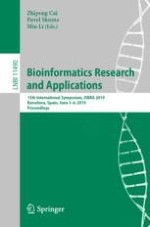2019 | OriginalPaper | Buchkapitel
A Robustness Analysis of Dynamic Boolean Models of Cellular Circuits
verfasst von : Ariel Bruner, Roded Sharan
Erschienen in: Bioinformatics Research and Applications
Aktivieren Sie unsere intelligente Suche, um passende Fachinhalte oder Patente zu finden.
Wählen Sie Textabschnitte aus um mit Künstlicher Intelligenz passenden Patente zu finden. powered by
Markieren Sie Textabschnitte, um KI-gestützt weitere passende Inhalte zu finden. powered by
